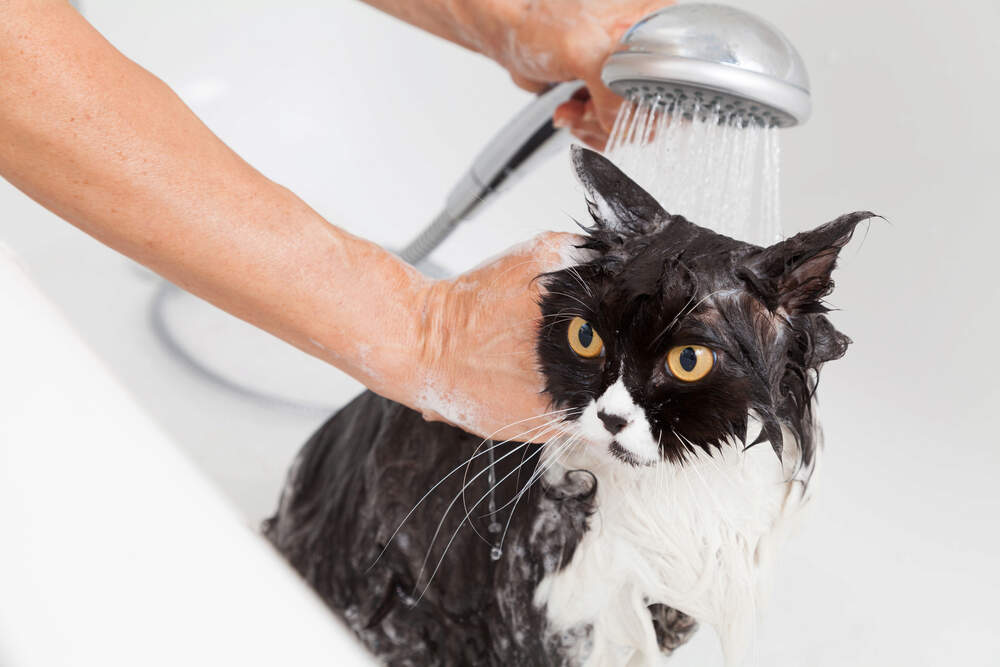How To Get Rid of Fleas on Kittens
Is there anything more adorable than your tiny kitten? His sweet little eyes, the way he rubs his face against your leg—it's almost too much to take in at once. But wait! Just as you're about to snuggle with your new best friend, you notice something out of place. What is that? It's a flea! Now what?
Don't panic! A flea infestation does not mean the end to future cuddle time. You can rid yourself of these tiny pests by following a few reliable recommendations.
Assess the Flea Situation
How you respond to your kitten's flea problem depends on your pet's age and weight. If your kitten is younger than 12 weeks, you need to wait to introduce flea prevention and treatment products. Most flea prevention products are age- and weight-specific, so be sure to check the product's guidelines before you use it. If you're still unsure about a product or the age and weight requirements, ask your veterinarian.
Cats—especially kittens—don't tolerate chemicals and drugs in the same way dogs do, so make sure to use products designed specifically for cats.
If you have a flea infestation, you should:
- Remove any visible fleas with a fine comb.
- Bathe your kitten with a flea and tick shampoo that's designed for sensitive skin, so it's gentle to use on your fur baby.
- Wash all bedding in hot water and vacuum any carpeted areas in your home. Be sure to dump the vacuum bag or canister outside to keep the fleas out of your house. Follow up with ADAMS Plus Flea & Tick Carpet Spray or ADAMS Flea & Tick Home Spray. Both kills fleas and flea eggs and protects your carpet for up to seven months.
- Protect your yard. Even though your kitten is indoors, the fleas came in from somewhere! ADAMS Yard & Garden Spray protects your yard and flower garden for up to four weeks.
- Begin using a topical treatment or a collar once your kitten is 12 weeks old.
Avoid Using Essential Oils to Rid Your Pet of Fleas
While it may be a popular remedy, it's best to avoid using essential oils for flea prevention or infestation. Because cats have trouble processing certain compounds, essential oils1 can be harmful and sometimes even toxic to your feline friend.
Acclimate Your Kitten to Bath Time
It's no secret that cats aren't huge fans of water. Don't despair! Your kitten is the perfect age to introduce him to water. With a few simple suggestions, your kitten can learn to love—or at least tolerate—the necessary flea bath.
- Introduce water gradually. Encourage your kitten to play in a small bowl filled with water.
- Create a positive bath-time experience. Grab your pet's favorite toys and add them to his bath ritual.
- Start small. While a bathtub seems appropriate, a sink or smaller tub might work better for your friend.
- Avoid sprayers. Instead, use your hand or a small cup for rinsing. Avoid eyes and ears when shampooing, and use a product specifically created for your pet's age and weight.
- Use warm water. Test the water on your wrist before placing your kitten in the water.
- Absorb as much excess water as possible with a dry towel. Some cats will want to remain in your loving embrace after a bath; others will want to be released quickly. Watch your pet for cues—he will let you know which approach he prefers.
Back to What's Important
Once you've rid your kitten, home, and yard of pesky fleas, it's time to snuggle up with your adorable pal once again. With all of the flea business behind you, you can enjoy that love-affirming purr you've come to adore.
1. Senestraro, Aja. “How to Get Rid of Fleas on Kittens." PetMD, 7 April 2020, https://www.petmd.com/cat/parasites/how-get-rid-fleas-kittens.




